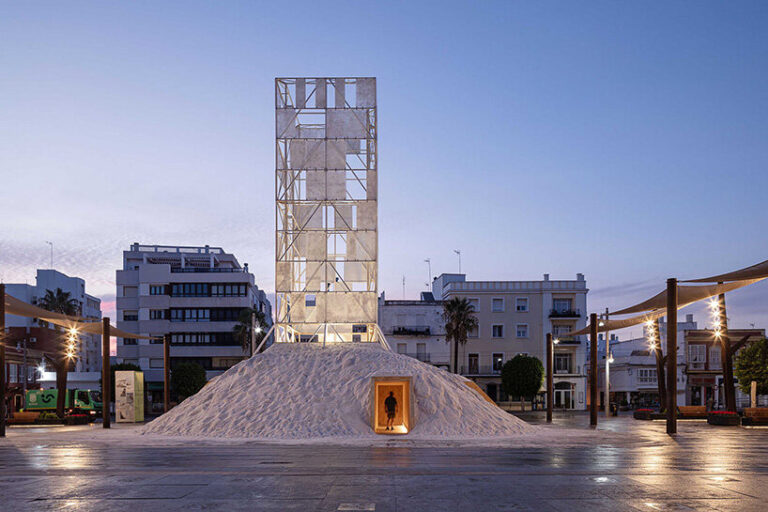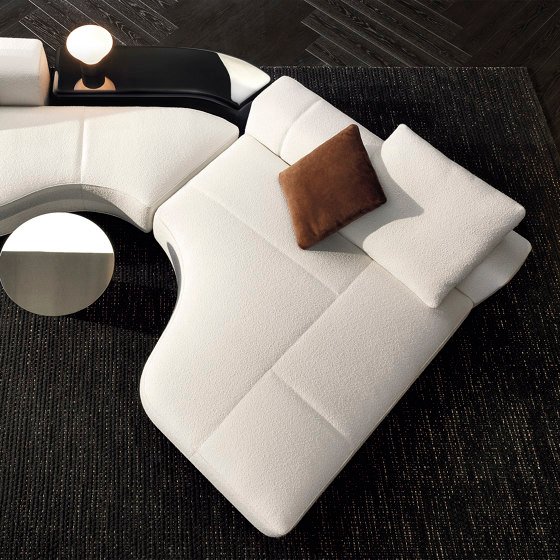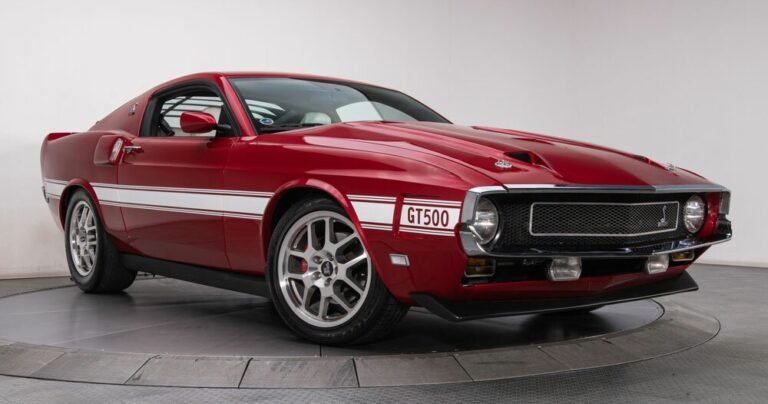Clever’s Guide to Pride Flags Through the Decades
Whether wrapping an ad campaign or flapping from a pole, hoisted at a protest or hated on by bigots, the rainbow flag is one of the most potent symbols of the last 50 years. Its mutability is by design: Originally eight stripes (with optional circles of stars), the creation was offered by artist Gilbert Baker and his collaborators without trademark or copyright. They planted a seed that blooms, to this day, in flag varieties well into the thousands, engaging with the mainstream and embodying complexity just like the LGBTQ+ community it proudly signifies. In celebration of Pride Month, we spoke with three experts in visual culture to take a look back at the origins and evolution of the queer community’s unmistakable signifier, and what it means to raise the flag today, tomorrow, and for all eternity.
1970s: Do It Yourself
In Andy Campbell’s essential book Queer x Design, the historian writes that the Vietnam vet and marijuana activist Gilbert Baker “was asked by San Francisco city supervisor Harvey Milk to design a new flag for the upcoming Gay Freedom Day celebrations,” in 1978. While gay activists had reclaimed the pink triangle used by Nazis to target homosexuals, Baker and his compatriots wanted a new, optimistic icon. His flag would feature eight stripes, arranged in spectral order with each color assigned a meaning: hot pink for sex, red for life, orange for healing, yellow for sunlight, green for nature, turquoise for magic and art, indigo for serenity, and violet for spirit. A second version featured an area filled with tie-dyed stars, in a queer take on the American flag. Both were flown at San Francisco’s United Nations Plaza as a global statement of gay solidarity.
As the story goes, Harvey Milk and San Francisco mayor George Moscone were assassinated a few months later. In 1979, the city’s Pride Parade Committee decided to display the striped Rainbow flag along the entirety of the parade route. During the manufacturing process for the many flags, enough hot pink fabric couldn’t be found, and turquoise was also dropped to create an even number of six stripes. The removal of sex and magic, “inadvertently mirrors what has happened as some LGBTQ+ causes have been embraced by mainstream audiences,” says Andrew Shaffer, interim coexecutive director of the GLBT Historical Society. “We have chosen to strip away the parts of ourselves and our communities that are hardest to conform,” he adds. The society now houses a remnant of one of those original flags. “It’s in remarkably good condition for its age,” Shaffer says.
1980s: Out of the Closets and Onto the Streets
As the LGBTQ+ community fought to address (and survive) the HIV/AIDS epidemic, Baker’s idea of the rainbow flag as a symbol of hope took on deeper meaning. People in mourning sewed it onto squares of the AIDS Memorial Quilt. Nicholson Earle, a member of the AIDS Coalition to Unleash Power, began preparing for a 1990 journey in which he carried a rainbow flag the 1,000 miles between San Francisco to the opening of the Gay Games in Vancouver, British Columbia. In perhaps the first of the flag’s many transmutations, leather enthusiast and publisher Tony DeBlase unveiled the Leather Pride flag in 1989, a series of black and blue stripes, with a white stripe in the center and a canton with a red heart.
1990s: On the Streets Where You Live
Not unlike the gay rights movement, by the 1990s, the rainbow flag was big business. In any urban center, you could find a gay bookstore selling the flag on pins, mugs, T-shirts, or even dildos. On porches in gay enclaves from Palm Springs to Provincetown, actual flags filled the air. According to The New York Times, in 1991, the artist David Spada transformed the flag into six anodized aluminum rings, which, when gathered on a ball bearing necklace quickly became a de rigueur accessory. In 1994, Baker created a mile-long flag that was carried past the United Nations and down New York City’s 5th Avenue to commemorate the 25th anniversary of the Stonewall uprising. Meanwhile, more communities were adopting other kinds of flags. In 1998, activist Michael Page offered a tristriped Bisexual Pride flag, which was 40% Pantone 226 (pink, for homosexuality), 40% Pantone 286 (blue, for heterosexuality), and 20% Pantone 258 (purple, for the blend).
2000s: Millennial Mutations
In Phoenix, Arizona, the turn of the century brought the unfurling of Monica Helms’s Trans Pride flag—five alternating stripes of baby boy blue, baby girl pink, and white—at the local Pride parade. This would go on to become one of the world’s most popular siblings to Baker’s original, which culminated, some 20 years later, in its consistent use as a color palette and design inspiration for outfits by the queens on RuPaul’s Drag Race and pop stars like Charli XCX and Kim Petras. In 2003, to mark the rainbow flag’s 25th anniversary, Baker fashioned the Rainbow 25 Sea-to-Sea flag, a full 1.25 miles of all eight original colors, for display in Key West, Florida, and eventual distribution to some 100 cities around the world.
2010s: Life Imitates Art
In 2015, the Museum of Modern Art (MoMA) acquired a mass-market production of the six-stripe flag for its permanent collection. “We acquired it on June 4, 2015, a mere few weeks before Obergefell v. Hodges, the U.S. Supreme Court 5–4 decision ruling that the Fourteenth Amendment requires all states to grant same-sex marriages and recognize same-sex marriages granted in other states,” says Paola Antonelli, MoMA’s senior curator of architecture and design and director of research and development. “But when June 26 came, we installed it right away, that same day, overjoyed and wanting to celebrate that epochal news. The rainbow flag is such a strong, quintessential design, it always belonged in MoMA’s Collection.”
Meanwhile, an abundance of new flags arrived, like in 2017, when Philadelphia’s Office of LGBT Affairs devised an eight-stripe iteration which, in solidarity with the communities of people of color recently targeted in violent incidents at local gay bars, added a stripe of black and a stripe of brown. (Those colors had also long been proposed to other new Pride flags to commemorate those lost to and living with AIDS.) The following year, artist Daniel Quasar envisioned a Progress Pride flag—intersecting the standard six stripes is a chevron of stripes incorporating the black and brown stripes and the colors of the Transgender Pride flag. The end of the decade saw some three million people, and one of the world’s largest pride flag, take over the streets of São Paulo for a protest against antigay Brazilian president Jair Bolsonaro.
2020s: Pride and Prejudice
Today, a new flag has entered the lexicon: Valentino Vecchietti’s intersex-inclusive Progress Pride flag, which centers a purple circle inside a yellow triangle (a symbol for intersex individuals created in 2013 by Morgan Carpenter) within Quasar’s new standard. The “constant shifting” of Baker’s original, says Andy Campbell, “in terms of how many colors it bears, and in what arrangement, gestures towards a history of change and communal/self-definition. Each new iteration adds complexity and nuance and, in my mind, credence to its arguable central importance in queer symbolics.”
And Baker’s original is still potent—a few days ago, someone burned a Pride flag and set fire to a few homes in Baltimore, while across the country, at Seattle Pacific University, dozens of students protesting their school’s ban on full-time staff’s right to be in same-sex relationships thrust a rainbow flag into the hand of their homophobic president in exchange for their diplomas.
While the rainbow flag might feel so ubiquitous that it’s lost its potency, clearly those who oppose gay rights feel otherwise. As Shaffer emphasizes, “every day, queer people are creating new symbols that point to a world yet to come. And as each symbol gets mainstreamed and incorporated into corporate logos and branding campaigns, we will continue to push further, to dream of new utopias, and to drag that new world into existence.”




